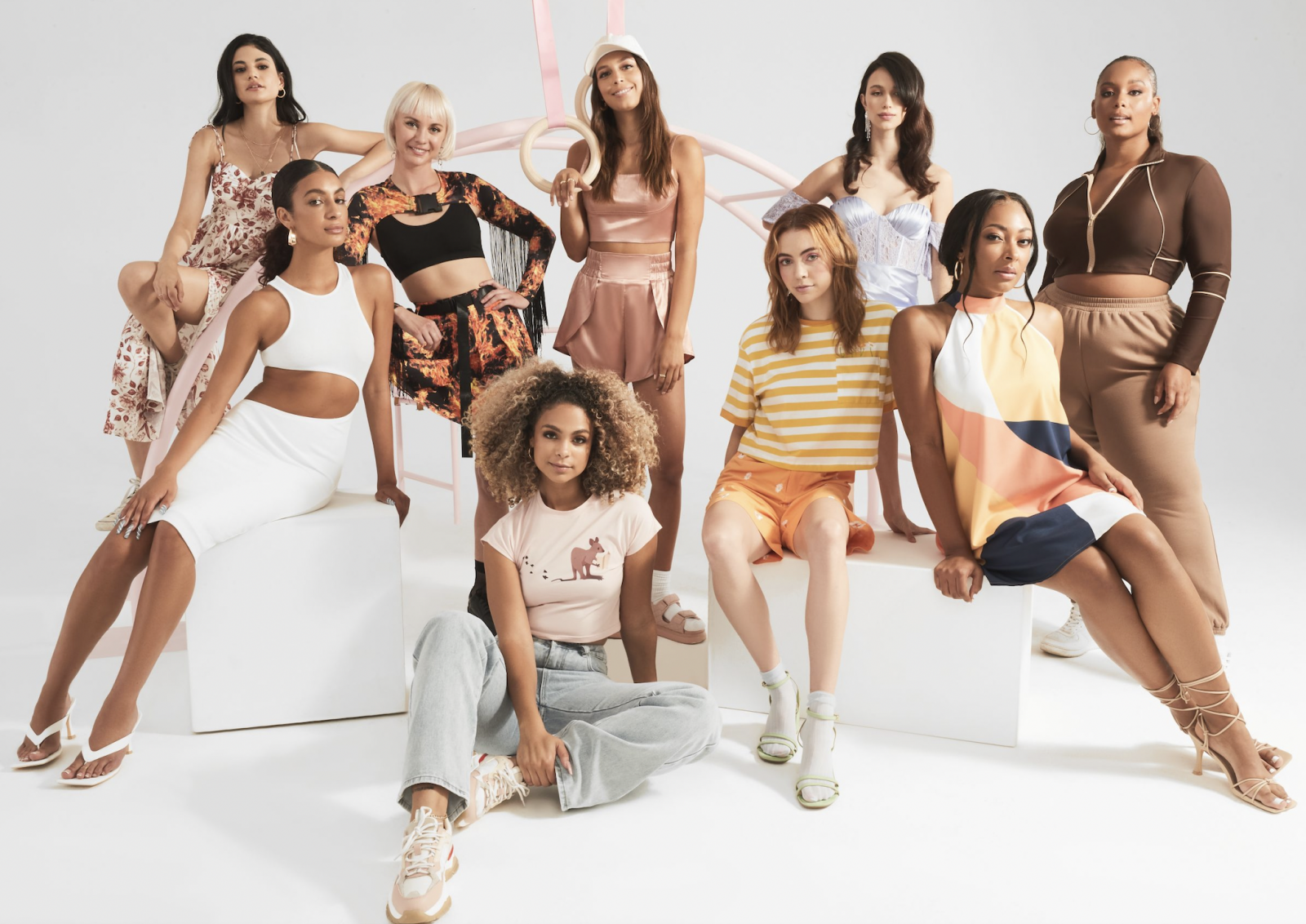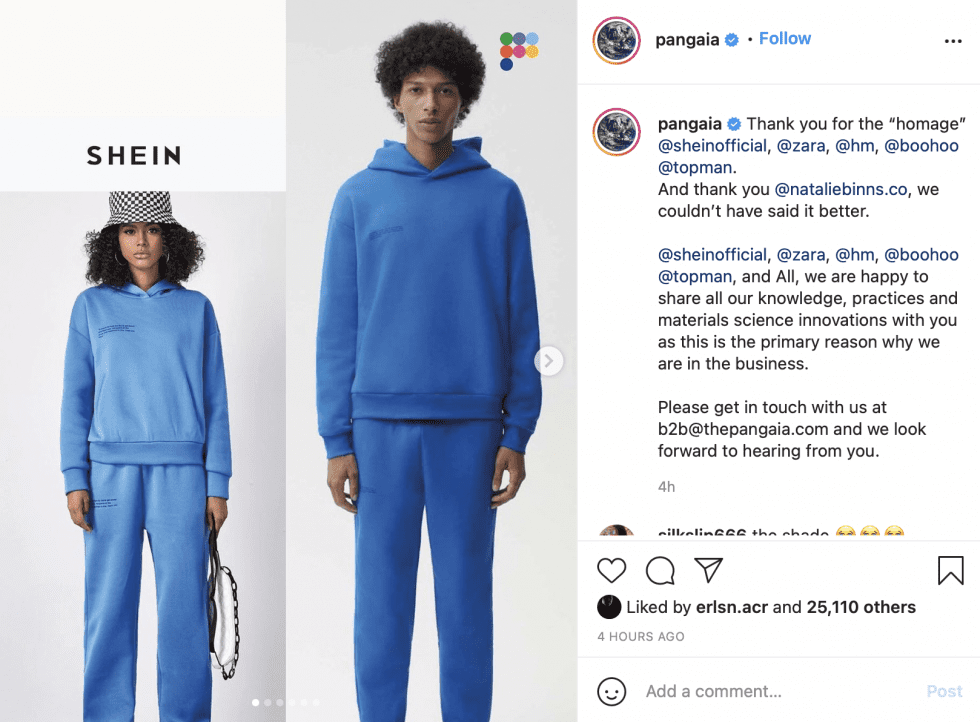
Chinese fast fashion giant Shein is making headlines this week after revealing that it is debuting a design contest of its own, one that will see emerging designers compete before a panel of judges, including Khloé Kardashian, designer Christian Siriano, former J. Crew creative director Jenna Lyons, stylist Law Roach and InStyle director Laurel Pantin, in order for a chance to win $100,000. The Shein X 100K Challenge – which comes in the firm of a four-episode series that will be aired on the retailer’s YouTube, Twitter, Instagram and Facebook pages, as well as on its app – gets its start on August 22.
Swiftly winning over fans in the west with its mobile-first model and ultra-fast fashion wares, Shein is already raising eyebrows in connection with the newly-announced endeavor, not only because it comes shortly after reports surfaced that the company is running afoul of modern slavery reporting requirements in the United Kingdom and Australia. But beyond that, the news comes as the stealthy rise of Shein – which surpassed Amazon as the most downloaded shopping app in the U.S. in May – continues to be plagued with claims of copying, with brands like Dr. Martens and Ralph Lauren filing infringement lawsuits against the company.
Outside of court, countless indie brands have taken to calling foul on the privately-held, Guangzhou, China-based company for hijacking their designs for its own benefit, including, in some instances, after attempting to partner with those brands. As French made-to-measure fashion brand Maison Cleo, for instance, has documented on its Instagram account, it has fallen victim to Shein’s cut-and-paste pattern on more than one occasion after receiving an email from the company inviting it to enter into a design partnership back in October 2020. While a rep for Maison Cleo stated that the company never took Shein up on the invitation, the fast fashion giant co-opted and sold replicas of a number of its designs anyway.

These instances are part of a larger pattern that has seen designers across the board publicly call foul – in court, but more commonly on social media – on big brands for allegedly hijacking their designs. These claims, however, are more nuanced than those that populate the general pool of copycat call-outs that have permeated the fashion industry almost always by way of social media. The designers in this situation claim that instead of merely plucking inspiration from various sources, including social media, as is common practice in creative industries, such as fashion, and in most cases, perfectly legal, the brands at issue (allegedly) had first-hand access to their work because they had access to the designers’ portfolios by virtue of the contests.
As for how brands routinely get away with such copying and what designers can do to protect themselves, the reality is not necessarily a rosy one because, as NYU law professor Christopher Sprigman recently told Business of Home, “Copyright does not really protect much of what [fashion designers] do,” which is why “there is, in fact, a ton of copying.” This is largely due to the fact that copyright law in the U.S. does not apply to “useful articles,” such as clothing, as a whole.
Taken together, the technicalities that come with the various types of intellectual property law – whether it be the separability requirement for copyright protection, the cost of a design patent, or the lack of strength of a trademark claim for certain “source-identifying” elements – form something of a legal (and practical) loophole that enables fashion brands (both high fashion ones and fast fashion ones, alike) to look to existing designs and recreate them without fear of infringement liability.
What does that mean for designers who are going into design competitions hoping for a big break and/or those that have been the subject to copying thanks to the fact that big brands – fast fashion ones and otherwise – routinely scour social media for inspiration? It means that there really is “not that much that they can do [to prevent copying],” Olivera Medenica, a partner at New York-based firm Dunnington Bartholow & Miller, who specializes in intellectual property, previously told TFL.
Nonetheless, she says that one thing that designs could do “is protect a picture of the design with the Copyright Office, or all of the pictures [or sketches] in the design portfolio as a collection. That way, at least there is proof that the design existed at a certain point in time prior to the infringement (assuming the design itself can benefit from copyright protection), even if it is not the three-dimensional garment or accessory.” Imagery, after all, tends to be easier to protect (as a whole) from a copyright perspective than things like clothing, handbags, and footwear due to the separability requirement imposed upon useful articles.
While that would likely not be enough to deter infringement (particularly by a much larger party), Medenica notes that this approach “would be helpful in showing who designed it first and when, which can be expensive to show after the fact in terms of legal fees.” That would likely be the most effective thing to do, she states, as she does not generally see “a trademark or design patent an option, as such protections would just not work for most of these circumstances.”
The overall lack of options for designers that are looking to prevent copying is generally the same in Europe, where most of fashion and luxury’s biggest names are headquartered. However, that does not mean that aggrieved parties do not have recourse after the fact.
“Fashion designs could be included among applied works of three-dimensional art that are eligible for copyright protection in Europe,” assuming that they are original, says Milan-based attorney Daniela Della Rosa, who is a partner at Curtis, Mallet-Prevost, Colt & Mosle LLP. “Therefore, fashion designers and companies interested in bringing actions for copyright infringement [after they are copied] can prepare beforehand by keeping records of the creation process, authorship, and ownership, including the chain of title, for their designs.”
These elements will be of “the utmost relevance for succeeding in proving the legal standing to bring actions, as well as originality from a subjective perspective (i.e., the author’s own efforts and reflection of their personality),” she notes, suggesting that relevant records should include “sketches or analogous documents (with their corresponding dates and names, signatures or stamps); correspondence exchanged regarding the creation process; agreements with the individuals involved (either employees or self-employed designers); and any related invoices and proof of payment.”
There is also merit, she notes, in “correctly marking your sketches” – to indicate the rightsholder – “before sharing them” with others, which will further help set the stage for legal action later should infringement occur.
None of this is to say that brands are not sued for copying – because they are. Fast fashion brands have been slapped with infringement lawsuits for copying easily separable elements of garments, such as the Versace-like jungle print that appeared on Fashion Nova dresses. But even in those instances, it is worth noting that the infringement claims apply only to the separable designs, themselves, and do not extend to the garments as a whole, thereby, demonstrating the limits of copyright protection and the leeway that brands have when it comes to copying.


Leave a Reply